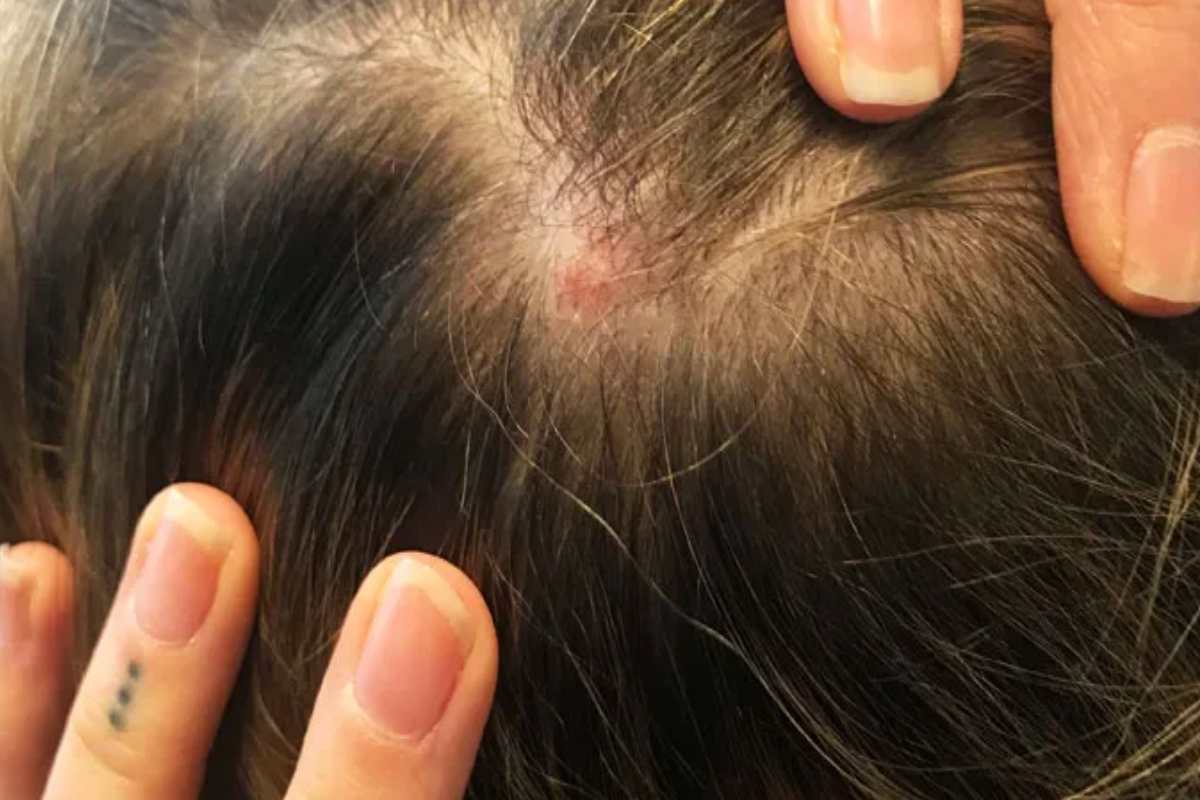Pilar cysts are skin-related. It is usually referred to as trichilemmal cysts. They are the most frequent form of skin cyst. It occurs in fewer than 10% of the population. They mostly harm the scalp’s skin.
It is a cyst filled with keratin. It is formed by the outer shell of the outer hair. Keratin is a protein that may be found in hair and nails. Trichilemmal cysts are most detected on the scalp and are most identified in middle-aged females. They frequently run-in families because they are inherited in an autosomal dominant fashion (ie, the tendency to the cysts can be is passed on by a parent to Their kid of any sex, and the youngster has a 1 in 2 chance of inheriting it).
If a parent has the disease, there is a 50% chance that a kid will have it as well. Pilar cysts can be passed on via families. There are no obvious risk factors for pilar cysts. However, those with damaged hair follicles or wounded skin may be more prone to them.
Pilar cysts are distinguished by their location. It is most found on the scalp. It is possible for a person to have more than one pilar cyst at the same time.
Table of Contents
Identification
Pillar cysts form on the skin’s surface. Even though 90% of pillar cysts arise on the scalp. They can, however, form anywhere in the body. The mouth and neck are two other sections of the body. Most persons have several pillar cysts at any given moment. It can also appear in some other private parts of the body. You should take proper care of the cyst and it is not wise to remove it by yourself. You must consult with a doctor for any private cyst removal.
Pilar cysts are painless, firm, and frequently movable within the subcutaneous plane on physical examination. The surface is smooth, with no punctum. Because of the stretching of the skin, the covering hair may be thin.
Who is at Risk for Contracting this Disease?
Pilar cysts affect 5-10% of the population, with adults and women being the most affected. The tendency to develop pilar cysts is inherited autosomal.
Pilar cysts are thought to arise from the anagen hair follicular epithelium’s outer root sheath. The development of pilar cysts may be inherited.
There are no recognized systemic syndromes related with pilar cysts.
Diagnosis:
Even though you can identify pillar cysts on your own. Some symptoms will arise, and you will recognize them. However, it is essential to consult with your doctor for confirmation. They can rule out other, maybe more dangerous, underlying causes.
To make a diagnosis, a biopsy is frequently performed. This entails removing a little amount of tissue from the affected region and sending it to a lab for microscopic examination. A CT scan may be used to rule out cancer and other forms of cysts in some cases.
This diagnostic equipment can also check at the cysts’ underlying layers to detect whether any more are developing. Pilar cysts are normally innocuous, therefore surgical excision is up to you and your doctor.
Even if a pilar cyst isn’t bothering you, it’s crucial to keep a watch on it. You need to be careful about the cyst size and other symptoms. Consult your doctor if you observe any changes other than the normal growth and development of pillar cysts.
Pillar cysts can develop into cancer in rare circumstances. When this happens, the cysts proliferate and expand quickly. It will spread so quickly that you will not detect it. Any malignant growth must be removed surgically.
Should It Remove?
Cysts can be uncomfortable. In that case, you must get rid of it. Because pillar cysts are most seen on the scalp, a catch might be uncomfortable when dressing or combing hair.
Before the cyst is removed, the patient will be given a local anesthetic. There are two ways to get rid of it. To remove fluid cysts, make a tiny incision in the skin. Remove the cyst in its entirety without cutting it.
After removing the cyst, the doctor will apply a dressing. Typically, the doctor will urge you to avoid soaking the bandage and to avoid touching the afflicted region. If you touch the afflicted region, you may become infected.
Surgical removal, on the other hand, is the most successful therapeutic approach.
There may be a little scar where the cyst was after surgery. Even after excision, such cysts might reappear.
The surgery is typically short, and no overnight stay in a hospital or clinic is required.
Infection and scarring are risks with every sort of surgery or incision. Consult your doctor if you notice any redness, inflammation, or pus discharge from the affected region. To address these symptoms, they may give oral antibiotics.
Additionally, you should also consult your doctor if you experience any pain following the procedure.






